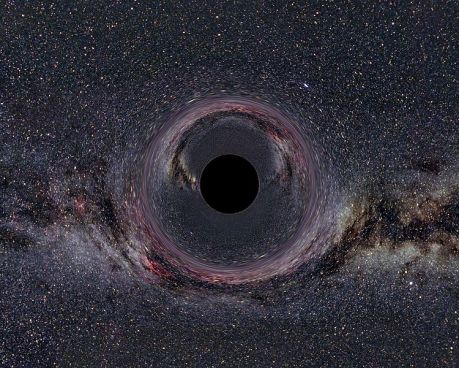The turbulent past of the Milky Way's black hole

Black_Hole_Milkyway, fot. By Deutsch: Ute Kraus, Physikdidaktik Ute Kraus, Universität Hildesheim, Tempolimit Lichtgeschwindigkeit, (Milchstraßenpanorama im Hintergrund: Axel Mellinger) English: Ute Kraus, Physics education group Kraus, Universität Hildesheim, Space Time Travel, (background image of the milky way: Axel Mellinger) [CC BY-SA 2.0 de (http://creativecommons.org/licenses/by-sa/2.0/de/deed.en) or CC BY-SA 2.5 (http://creativecommons.org/licenses/by-sa/2.5)], via Wikimedia Commons
There is strong evidence that Sagittarius A*, the supermassive black hole at the centre of our galaxy, was more active in the past. EU-funded astrophysicists, studying X-ray emission in the neighbourhood, found signs of dramatic changes.
Three space telescopes tuned to X-ray wavelengths detected an increase in flares from the usually quiet black hole at the centre of the Milky Way. With EU funding of the project HIGH-Z & MULTI-λ (Multi-wavelength study of accretion onto black holes and its evolution during cosmic times), astrophysicists tried to learn whether this is normal behaviour.
To monitor Sagittarius A*'s behaviour over the last years, the astrophysicists combined observations from the National Aeronautics and Space Administrations' (NASA) Chandra X-ray Observatory and Swift satellite with the European Space Agency's (ESA) XMM-Newton. One bright X-ray flare seemed to be produced every 10 days. However, in early 2014, the rate of X-ray flares produced increased to one per day.
Moreover, two bright X-ray flares were observed simultaneously with emissions from a magnetar – a highly magnetised star in bound orbit around the black hole. One X-ray flare produced close to Sagittarius A* was the brightest ever recorded. Such a rare and extreme event gave astrophysicists the chance to study one of the most bizarre objects in our galaxy.
The X-ray emission from Sagittarius A* followed the close passage of an extended cloud of gas and dust, named G2. The fact that the heart of our galaxy became more active not long after G2 passed by led astrophysicists to consider the possibility that matter coming off G2 might have caused the increase in the black hole's feeding rate.
Despite the efforts of the astrophysicists, what caused it remains a mystery. The observations accumulated are, however, valuable because such supermassive black holes are common throughout the universe. In particular, XMM-Newton observations were used to study the long-term variability of a large number of active galactic nuclei.
X-ray emission variability is one of the main characteristics of most accreting black holes that also produce powerful winds at specific moments in their lifetime. During the HIGH-Z & MULTI-λ project, the astrophysicists showed that this behaviour is not a peculiarity of accreting black holes. It is also observed in accreting neutron stars.
As a consequence of being extremely massive, the presence of black holes has a deep influence on the surroundings. Most current theories about what happens due to space-time being bended around them are about things falling into supermassive black holes. Within the HIGH-Z & MULTI-λ project, scientists saw things close up for the first time.
published: 2016-05-30

